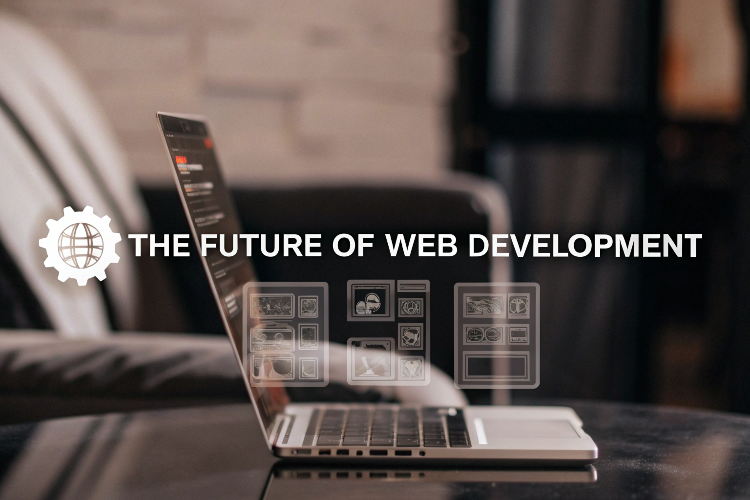Blog
The Future of Web Development: Trends to Watch in 2025.
Web Development & Design ▪ 2025-03-07

Web development is an ever-evolving field, driven by technological advancements and changing user expectations. As we approach 2025, businesses and developers must stay ahead of emerging trends to remain competitive in the digital landscape. From artificial intelligence and progressive web apps to low-code development and cybersecurity enhancements, the future of web development promises innovation and efficiency.
In this blog, we’ll explore the top web development trends shaping 2025 and how they will impact businesses, developers, and end-users.
1. Artificial Intelligence and Machine Learning in Web Development
AI-powered web development is transforming how websites operate. From chatbots and virtual assistants to AI-driven content generation, the role of artificial intelligence is becoming more significant.
Key AI Trends:
-
AI-Powered Chatbots: AI-driven chatbots provide instant responses, improving user engagement and customer service.
-
AI-Based Code Assistance: Tools like GitHub Copilot and Tabnine help developers write efficient and bug-free code faster.
-
Personalized User Experience: AI analyzes user behavior to provide personalized recommendations and content.
2. Progressive Web Apps (PWAs)
PWAs combine the best features of web and mobile applications, offering a seamless experience across all devices. They load faster, work offline, and provide app-like functionality without requiring downloads from app stores.
Benefits of PWAs:
-
Improved Performance: Faster loading speeds improve user engagement and SEO rankings.
-
Offline Accessibility: Users can access content even without an internet connection.
-
Lower Development Costs: PWAs eliminate the need for separate web and mobile app development.
3. Voice Search Optimization
With the rise of smart assistants like Alexa, Siri, and Google Assistant, voice search is becoming more prevalent. Websites optimized for voice search will have a competitive edge in 2025.
Strategies for Voice Search Optimization:
-
Conversational Keywords: Use natural language and long-tail keywords.
-
Schema Markup: Implement structured data for better search engine understanding.
-
Fast Loading Speeds: Voice search results prioritize quick-loading websites.
4. Low-Code and No-Code Development
Low-code and no-code platforms are making web development accessible to non-programmers, allowing businesses to build functional websites with minimal coding knowledge.
Advantages of Low-Code Development:
-
Faster Development Time: Reduce the time required to build and launch websites.
-
Cost-Effective: Minimizes the need for extensive development teams.
-
Increased Flexibility: Easily update and modify websites without deep technical expertise.
5. Serverless Architecture
Serverless computing allows developers to build applications without managing servers. Cloud providers handle infrastructure, enabling greater scalability and efficiency.
Benefits of Serverless Architecture:
-
Cost Savings: Pay only for actual resource usage.
-
Improved Scalability: Applications can automatically scale based on demand.
-
Reduced Maintenance: No need for server management or infrastructure updates.
6. Motion UI for Engaging Web Designs
Motion UI enhances user experience by incorporating animations, transitions, and interactive elements.
Why Motion UI Matters:
-
Improves User Engagement: Interactive elements keep users on the site longer.
-
Enhances Storytelling: Helps guide users through content and product showcases.
-
Creates a Modern Look: Makes websites visually appealing and professional.
7. Cybersecurity Enhancements in Web Development
With increasing cyber threats, web developers must prioritize security measures to protect user data and maintain trust.
Key Cybersecurity Trends:
-
Biometric Authentication: Using fingerprint and facial recognition for secure logins.
-
AI-Based Threat Detection: AI-powered security tools can detect and prevent cyber threats in real time.
-
Blockchain for Data Security: Decentralized security measures enhance data protection.
8. Web 3.0 and Decentralization
Web 3.0, powered by blockchain technology, aims to create a more decentralized and user-controlled internet. This shift will impact how websites are built and monetized.
Features of Web 3.0:
-
Decentralized Applications (DApps): Built on blockchain, reducing reliance on central authorities.
-
Smart Contracts: Automating transactions without intermediaries.
-
User-Owned Data: Users have more control over their personal information.
9. Internet of Things (IoT) Integration
IoT devices are becoming more integrated with web applications, enabling seamless connectivity between devices and websites.
Examples of IoT in Web Development:
-
Smart Home Controls: Websites allowing users to manage IoT devices remotely.
-
Real-Time Data Monitoring: Web applications displaying real-time data from connected devices.
-
Enhanced User Experience: Personalized content based on IoT data insights.
10. Augmented Reality (AR) and Virtual Reality (VR) in Web Development
AR and VR are transforming how users interact with web content, providing immersive experiences for e-commerce, real estate, and entertainment industries.
Applications of AR/VR in Web Development:
-
Virtual Try-Ons: Allow users to see how products look before purchasing.
-
Interactive 3D Models: Enhance product visualization for online shopping.
-
VR Tours: Provide immersive experiences for real estate and tourism websites.

